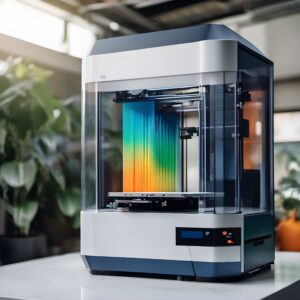3D Printing and the Circular Economy: Reducing Waste and Recycling Materials

Examine how 3D printing is contributing to the circular economy by reducing waste and enabling the recycling of materials.
3D printing is increasingly being recognized as a key enabler of the circular economy, a system that aims to minimize waste and make the most of resources by keeping products, materials, and components in use for as long as possible. In August 2024, several innovations highlighted how 3D printing is helping industries across the globe reduce waste, recycle materials, and create more sustainable production processes. By integrating 3D printing into the circular economy, businesses are not only reducing their environmental footprint but also enhancing their operational efficiency and cutting costs.
Reducing Waste Through Additive Manufacturing
One of the primary ways that 3D printing contributes to the circular economy is through its additive manufacturing process, which builds objects layer by layer, using only the material necessary for the final product. This method stands in stark contrast to traditional subtractive manufacturing, which often involves cutting away large portions of material, resulting in significant waste. With 3D printing, waste is minimized from the outset, as each product is created with precise material usage. This efficiency is particularly important in industries like aerospace and automotive, where reducing material waste can lead to substantial cost savings and lower environmental impact.
Recycling Materials as Feedstock
Another major advancement in August 2024 was the growing use of recycled materials as feedstock for 3D printing. Companies are increasingly exploring ways to recycle plastics, metals, and other materials from used products or manufacturing waste and repurpose them for new 3D printed items. For instance, post-consumer plastics, such as those from old packaging or discarded products, can be shredded, processed, and converted into filaments for 3D printers. This not only diverts waste from landfills but also reduces the demand for virgin materials, further conserving resources.
In addition to plastics, metal powders derived from recycled scrap metal are being used in high-end industrial 3D printing processes. These powders can be utilized to create new parts and components, extending the life cycle of materials that would otherwise be discarded. This capability is particularly beneficial in sectors like construction and heavy industry, where the recycling of metals can lead to significant environmental and economic benefits.
Enabling Product Life Extension
3D printing also plays a crucial role in extending the life of existing products, another key aspect of the circular economy. By enabling the production of spare parts on demand, 3D printing reduces the need for mass-produced inventories that may never be used and eventually discarded. This is especially valuable for industries that rely on long-lasting machinery or equipment, where parts may become obsolete or unavailable over time. With 3D printing, companies can quickly produce the exact part needed to repair or upgrade a product, extending its useful life and reducing the need for new manufacturing.
Moreover, 3D printing allows for the refurbishment and remanufacturing of products. Damaged components can be repaired or replaced with 3D printed parts, restoring the product to its original condition. This process not only saves materials but also reduces the energy and resources required to produce new items, contributing to a more sustainable production cycle.
Driving Innovation in Sustainable Design
Beyond recycling and waste reduction, 3D printing is fostering innovation in sustainable design. The technology allows designers to experiment with complex geometries and lightweight structures that would be difficult or impossible to achieve with traditional manufacturing methods. These designs often require less material and are more efficient to produce, further supporting the goals of the circular economy. For example, 3D printed structures inspired by natural forms, such as honeycombs or latticework, offer strength and durability with minimal material usage.
Additionally, 3D printing enables the customization of products to meet specific needs, reducing overproduction and the waste associated with unsold goods. By producing items on demand, companies can tailor their manufacturing processes to actual consumer demand, avoiding the pitfalls of excess inventory and reducing the risk of waste.
The Future of 3D Printing in the Circular Economy
As 3D printing technology continues to advance, its role in the circular economy will likely expand. Future developments may include the creation of fully biodegradable or recyclable 3D printing materials, further enhancing the sustainability of the process. Additionally, as more industries adopt 3D printing, the collective impact on waste reduction and resource efficiency could be profound.
3D printing is proving to be a powerful tool in the transition towards a circular economy. By reducing waste, recycling materials, and enabling sustainable product design and life extension, 3D printing is helping industries create more efficient and environmentally friendly production systems. The innovations of August 2024 demonstrate that this technology is not just about making things; it’s about making things better—for businesses, consumers, and the planet. As the world continues to seek solutions for sustainability, 3D printing will play an increasingly vital role in building a more circular and sustainable future.



